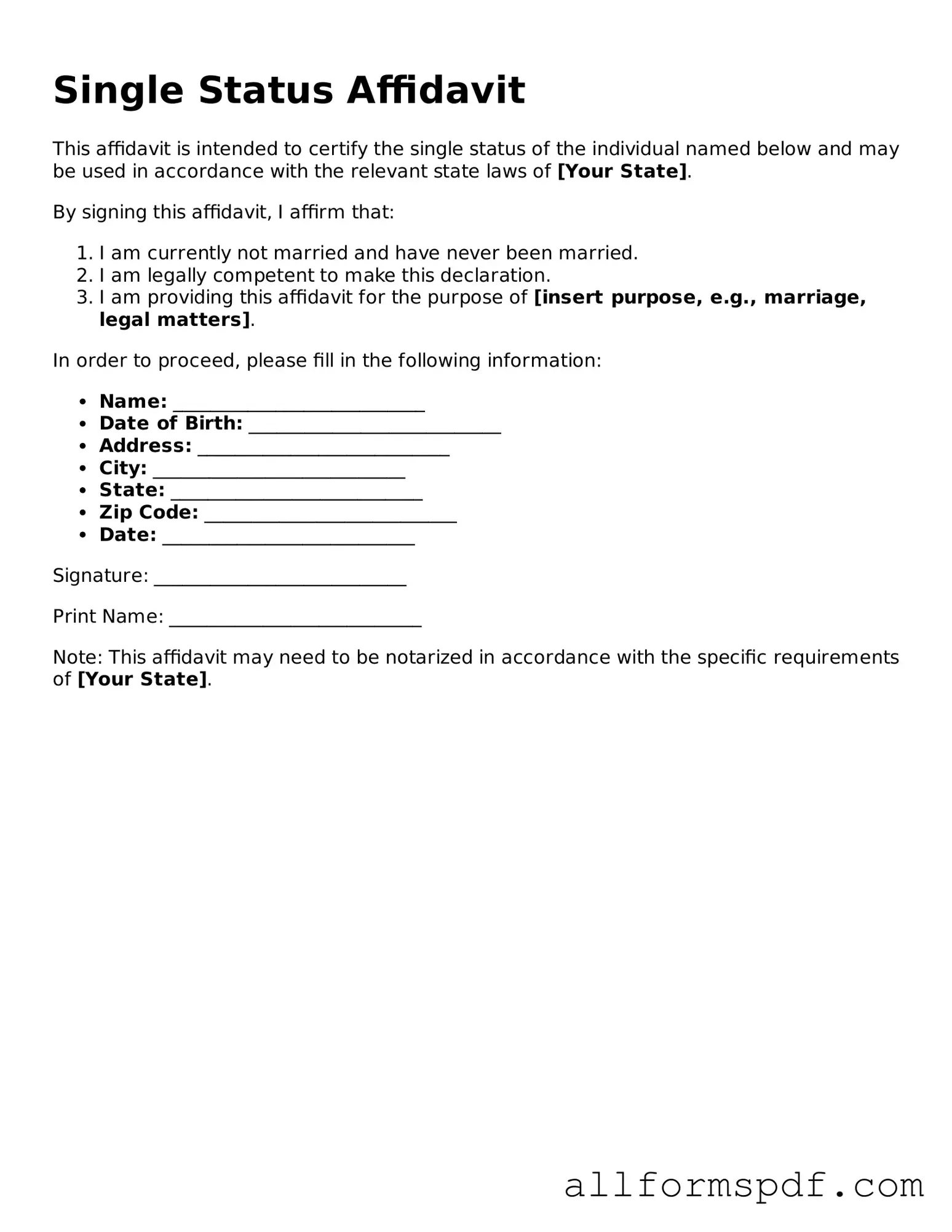Filling out the Single Status Affidavit form can seem straightforward, but many individuals make common mistakes that can lead to delays or complications. One frequent error is providing inaccurate personal information. This includes misspellings of names, incorrect birth dates, or wrong addresses. Such inaccuracies can raise questions about the validity of the affidavit and may require additional documentation to resolve.
Another mistake involves failing to sign the form in the designated area. A signature is a crucial component of the affidavit, as it verifies the authenticity of the information provided. Without a signature, the document is incomplete and cannot be processed. Always double-check that you have signed where required before submitting the form.
Many people also overlook the need for a witness or notarization. Depending on the requirements of the jurisdiction, the affidavit may need to be signed in the presence of a witness or a notary public. Neglecting this step can invalidate the affidavit, causing further delays in your application process.
In addition, individuals sometimes forget to date the form. Including the date of signing is essential, as it establishes when the affidavit was completed. An undated form can lead to confusion and may be rejected by the reviewing authority.
Another common pitfall is not providing sufficient identification. The affidavit often requires a form of ID to accompany it, such as a driver’s license or passport. Failing to include this identification can result in the form being considered incomplete.
People frequently misinterpret the instructions for the form. Each jurisdiction may have specific requirements or variations in the affidavit. Carefully reading the instructions ensures that you understand what is needed and can help avoid mistakes that could delay processing.
Lastly, some individuals submit the affidavit without reviewing it thoroughly. Errors can easily go unnoticed in a rush to complete the form. Taking the time to review your answers can help catch mistakes before submission, ensuring a smoother process.
